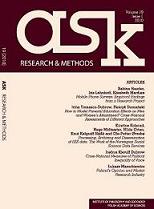Do More Contact-attempts Reduce Non-response Bias in Representative Face-to-Face Interviews? Findings from a PAPI Survey with a Low Response Rate
Do More Contact-attempts Reduce Non-response Bias in Representative Face-to-Face Interviews? Findings from a PAPI Survey with a Low Response Rate
Author(s): Piotr JabkowskiSubject(s): Social Sciences
Published by: Instytut Filozofii i Socjologii Polskiej Akademii Nauk
Keywords: non-response bias; contact-attempts; response rate; dissimilarity between sample and population
Summary/Abstract: The aim of this article is to examine whether providing pollsters with multiple opportunities to carry out interviews with a sample of randomly selected respondents reduces non-response bias. First, I present the procedures for assessing non-response bias in sociological surveys, opting for a method based on post-stratifi cation weights. Next, using a unique dataset, I address four basic questions related to the research problem: (1) Do more contact attempts reduce the dissimilarity between the sample and population distributions? (2) Do more contact attempts reduce the need for post-stratifi cation weighting? (3) Which categories of respondents are underrepresented and/or overrepresented in the sample in the early and late contact attempts? (4) Do more contact attempts reduce non-response bias? While more contact attempts increased the response rate and closed the gap between sample and population, they do not always reduce the level of non-response bias. Indeed, for some types of variables, the more contact attempts, the larger the non-response bias.
Journal: ASK. Research & Methods
- Issue Year: 2011
- Issue No: 20
- Page Range: 27-58
- Page Count: 32
- Language: English

